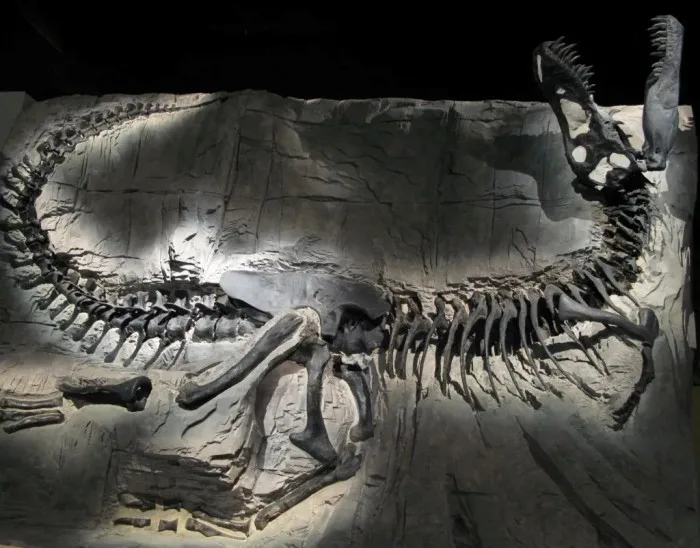Before the mighty T. rex ruled the prehistoric world, there was Khankhuuluu mongoliensis — a newly discovered dinosaur species that sheds light on the evolutionary rise of tyrannosaurs. Found in Mongolia, this 86-million-year-old fossil is rewriting our understanding of how these apex predators came to dominate.
Discovered in a museum collection and originally misidentified, the two partial skeletons were recently reanalyzed by researchers from the University of Calgary. Their study, published in Nature, reveals that Khankhuuluu is the closest known ancestor of all tyrannosaurs — including the iconic Tyrannosaurus rex.
The name Khankhuuluu mongoliensis means “Prince Dragon of Mongolia.” And fittingly, this species marks the transition from small, nimble hunters of the Jurassic era to the massive bone-crushing predators we recognize from pop culture.
Unlike the 6-8 ton T. rex, Khankhuuluu weighed just around 750 kg. But key features — especially in its skull — reveal the early development of traits that gave tyrannosaurs their legendary bite strength.
Lead researcher Jared Voris explains that the dinosaur’s nasal bone shows the beginnings of the crushing power that would later define its monstrous descendants.
The fossil also offers evidence that early tyrannosaurs moved between Asia and North America via ancient land bridges, helping to diversify and evolve distinct species across continents.
“This discovery helps us redraw the tyrannosaur family tree,” says paleontologist Darla Zelenitsky. “Before they became kings, they were princes.”


